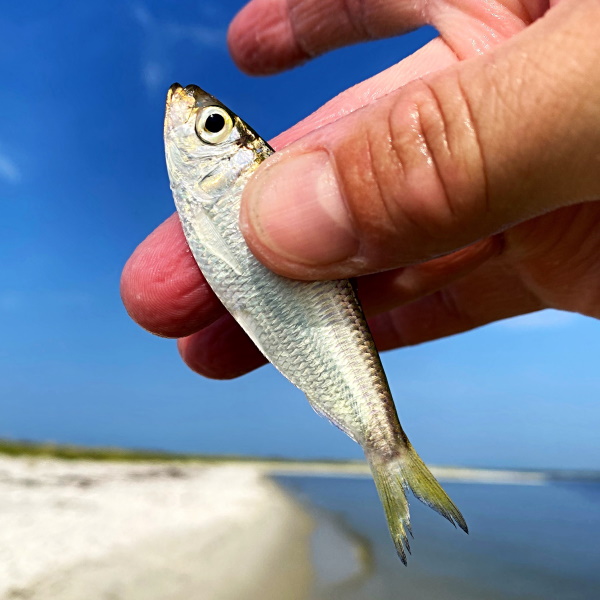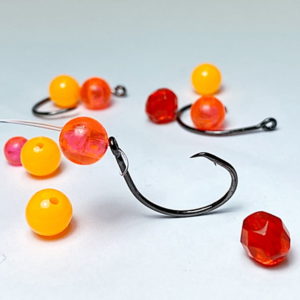
What is often referred to as “whitebait” in Florida, usually means a Scaled Sardine. With that said, you will definitely run across anglers that use the term much more loosely to include other baitfish as well. Regardless, whitebait is a great 3-6″ bait option for many species such as snook, redfish, snapper, speckled trout, and many others. Sometimes these baits are also referred to as pilchards.
Overall, these scaled sardines are one of the best possible baits you can use along the Gulf Coast. They survive better than greenbacks (threadfins) in a live well, but still not all that great for a long period of time. Therefore, it’s best that you catch what you need on the day of your fishing trip.
Chumming With Pilchards
Because they are a somewhat fragile bait, it’s normal to have some dead or injured ones. It’s common practice to toss those into the water to help chum up the fish you are after. Don’t throw too many though, as you want them to still eat your bait.
How To Rig Pilchards

Scaled sardines should be hooked at the top of the face between the eye and the mouth. As shown above, you will find a tiny piece of tough cartilage above the mouth. This location will hold the hook best, and will help to prevent them from shaking off.
If you want them to swim toward the surface, you can also hook them from the bottom instead, behind the anal fin. This will encourage your bait to swim to the surface to entice fish higher in the water column.
Whitebait vs Greenbacks vs LY
Here’s the basic rundown of 3 common baits that can be confusing to keep straight.
Whitebait is a scaled sardine (Harengula jaguana), which is a pilchard.
Greenbacks are Atlantic Thread Herring (Opisthonema oglinum), which are also referred to as Greenies, threadfins, or threadfin herring. These can be clearly differentiated by the long dangling thread-like fin hanging off the back of the dorsal fin (shown below).
LY’s are Gulf Menhaden (Brevoortia patronus), which are bunker or pogies. Ironically, they are not in fact “alewifes” which is where the slang term “LY” comes from.
This is NOT “whitebait. This is a “greenback”.

How To Catch Whitebait
Whitebait is most often caught using a castnet, which is definitely the most efficient way to gather them. If you have not taken the time to learn how to throw a castnet, it really isn’t very hard to do. I’ve seen 5 or 6 year old kids throw a cast net effectively. Trust me, if I can do it, you can too.
You can find scaled sardines in bays, near bridges, and particularly over grass flats adjacent to deeper water.
Chum Up Bait Before Throwing On Them
To make it easier on yourself, you can chum them to a specific spot before wasting energy casting here and there. You can purchase commercial chum powders that you add water to in order to clump it up, or you can make your own chum. Toss the clumps out in the area where you want them to congregate. Let the current carry your chum over a grassy area or other area where you expect that they are holding. If they are there, they will eventually make their way to you within a fairly short period time.
Hunt Them Down
If you don’t want to chum, you can also search for them early in the day by spotting movement or flashes in the water, or feeding birds over them. Once you spot the bait, you can move in closer using a boat, walking down a pier, or even walking the shores of some bays.
Conclusion
Proper identification of bait fish being referred to in conversations can be difficult. Many anglers don’t really know the proper names of the bait they use, and sometimes they use the names interchangeably, or even incorrectly altogether.
While you will occasionally encounter inconsistencies, when in Florida, the term “whitebait” most often refers to Scaled Sardines. There you have it – now you know!
Tight lines!
Augustus Clay
Let’s Get This Right!
If you are in disagreement with my conclusions here, I would love to hear from you! Please email me at anglerwithin@gmail.com if you have further clarification on what you think the correct answer is.



